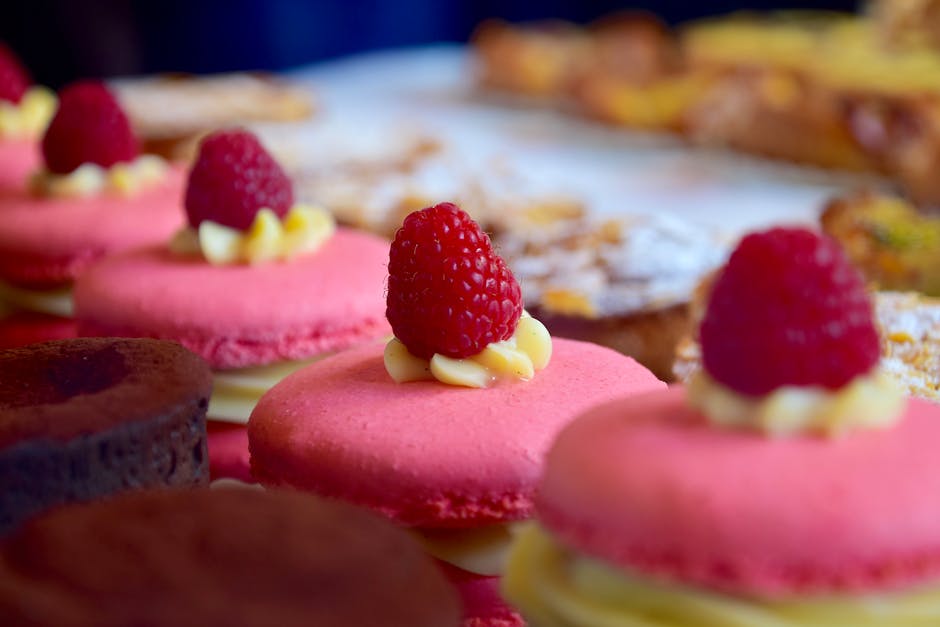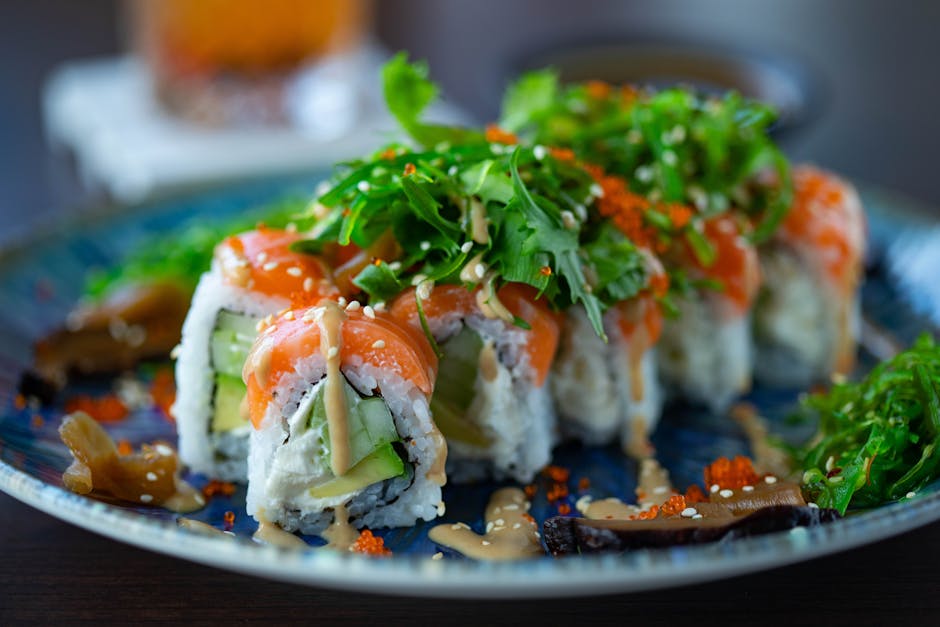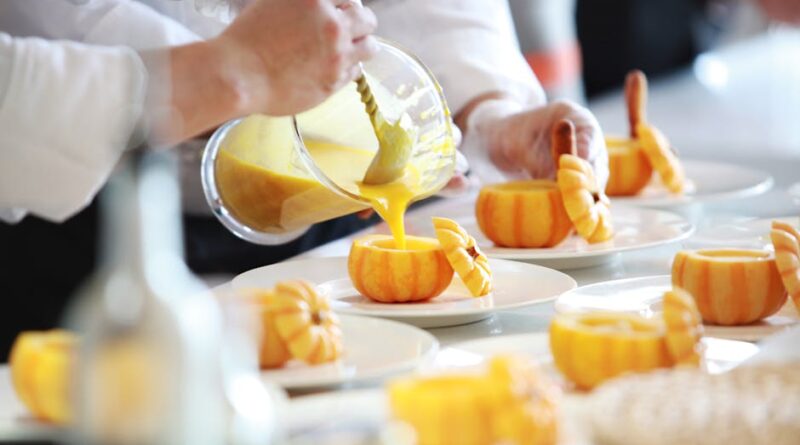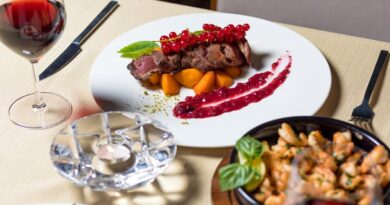The Art of Food Presentation: Elevating Culinary Experiences
When it comes to enjoying a meal, the taste is undoubtedly a crucial factor. However, the visual appeal of a dish plays a significant role in shaping our overall dining experience. The art of food presentation is a skill that has been honed over centuries, with chefs and food enthusiasts alike striving to create visually stunning dishes that not only delight the taste buds but also please the eyes. In this article, we will delve deep into the world of food presentation, exploring its history, techniques, current trends, and the impact it has on our perception of food.
The History of Food Presentation

Food presentation is not a modern concept; in fact, it dates back to ancient times when elaborate feasts were a common occurrence. In ancient Rome, for example, food was not only prepared to taste delicious but also to look visually appealing. The Romans believed that the presentation of a dish was just as important as its taste, and they often used elaborate tableware and garnishes to enhance the visual appeal of their meals.
In the Middle Ages, food presentation took on a whole new level of extravagance. Banquets were elaborate affairs, with dishes arranged in intricate patterns and designs to impress guests. Meats were often sculpted into elaborate shapes, and fruits and vegetables were used to create vibrant displays that showcased the wealth and status of the host.
Fast forward to the present day, and food presentation has evolved into an art form in its own right. Chefs around the world are constantly pushing the boundaries of creativity, using innovative techniques and unconventional ingredients to create dishes that are not only delicious but also visually stunning.
The Elements of Food Presentation

Food presentation is a multi-faceted art that involves a combination of elements to create a visually appealing dish. These elements include:
Color
Color plays a vital role in food presentation, as it can evoke certain emotions and enhance the overall aesthetic of a dish. Chefs often use a variety of colorful ingredients to create contrast and visual interest on the plate. For example, a dish with vibrant red tomatoes, green parsley, and yellow corn can be visually striking and appetizing.
Texture
The texture of food is another essential element of presentation. Combining different textures, such as crispy, crunchy, and creamy, can create a sensory experience that adds depth to a dish. For example, pairing a tender piece of meat with crispy roasted vegetables can create a harmonious balance of textures on the plate.
Shape
The shape of food can also impact its presentation. Chefs often use various techniques such as molding, cutting, and stacking to create visually appealing shapes on the plate. For example, using a ring mold to shape rice into a perfect circle or stacking slices of vegetables to create a tower can add visual interest to a dish.
Height
Creating height on the plate can add dimension and drama to a dish. Chefs often use garnishes, sauces, and edible decorations to build height and create a dynamic presentation. For example, placing a piece of fish on a bed of vegetables and topping it with a drizzle of sauce and a sprinkle of herbs can create a visually stunning dish with varying levels of height.
Techniques of Food Presentation

There are several techniques that chefs use to elevate the presentation of a dish. These techniques require precision, skill, and creativity to create visually stunning plates that are as pleasing to the eyes as they are to the palate.
Plating Techniques
Plating techniques involve arranging food on a plate in a visually appealing manner. Chefs often use different methods such as stacking, layering, and fanning to create artistic presentations that showcase the ingredients and flavors of a dish. The way food is arranged on the plate can significantly impact how it is perceived by the diner.
Garnishing
Garnishing is the art of decorating a dish with edible embellishments such as herbs, flowers, or sauces. Garnishes not only add visual interest to a dish but can also enhance its flavor and texture. Chefs often use garnishes to add a pop of color, create contrast, or highlight specific ingredients on the plate.
Sauces and Drizzles
Sauces and drizzles are essential components of food presentation that can add depth and flavor to a dish. Chefs often use sauces to add a burst of color, create a visual focal point, or tie the flavors of a dish together. Drizzling a sauce in a zigzag pattern or using a squeeze bottle to create intricate designs can add a touch of elegance to a plate.
Edible Decorations
Edible decorations are another way to enhance the visual appeal of a dish. Chefs often use ingredients such as edible flowers, microgreens, or fruit carvings to create intricate designs and patterns on the plate. These decorations not only add beauty to a dish but can also showcase the chef’s creativity and attention to detail.
Modern Trends in Food Presentation

In recent years, food presentation has taken on a new level of creativity with chefs experimenting with avant-garde techniques and innovative approaches to plating. Some of the modern trends in food presentation include:
Minimalist Plating
Minimalist plating focuses on simplicity and elegance, with chefs using clean lines and minimal garnishes to showcase the ingredients of a dish. This approach allows the flavors and textures of the food to take center stage, creating a visually appealing presentation that is both modern and sophisticated.
Deconstructed Dishes
Deconstructed dishes involve breaking down a traditional recipe into its individual components and presenting them in a new and innovative way. This trend allows diners to experience familiar flavors in a fresh and unexpected way, creating a sense of excitement and intrigue.
Interactive Plating
Interactive plating involves engaging diners in the presentation of a dish, allowing them to customize their meal and create a unique dining experience. Chefs often use elements such as DIY garnishes, tableside preparations, or interactive serving vessels to create a sense of playfulness and interactivity at the table.
The Impact of Food Presentation
The art of food presentation goes beyond just aesthetics; it can have a profound impact on our perception of food and the dining experience as a whole. Research has shown that the way a dish is presented can influence how we perceive its taste, freshness, and even its nutritional value.
Studies have found that diners are more likely to enjoy a dish that is visually appealing, even if the taste is average. The presentation of a dish can create a sense of anticipation and excitement, making the dining experience more enjoyable and memorable.
Furthermore, food presentation can also influence our perception of portion size and value. A dish that is artfully plated and garnished may appear more substantial and luxurious, leading diners to believe that they are getting a better value for their money.
Common Misconceptions about Food Presentation
One common misconception about food presentation is that it is only important for high-end restaurants or fine dining establishments. In reality, the way a dish is presented can impact diners at all levels, from casual eateries to home-cooked meals. Simple techniques such as using colorful ingredients, varying textures, and creative plating can elevate the dining experience and make even everyday meals more enjoyable.
Conclusion
Food presentation is an art form that has the power to transform a meal into a memorable culinary experience. By using a combination of color, texture, shape, and height, chefs can create visually stunning dishes that not only delight the senses but also evoke emotions and tell a story. Whether it’s a minimalist masterpiece or a deconstructed delight, the art of food presentation adds an extra layer of creativity and sophistication to the dining experience, making every meal a feast for the eyes as well as the taste buds.
To wrap things up, the next time you sit down to enjoy a meal, take a moment to appreciate the artistry and skill that goes into food presentation. From the meticulous plating techniques to the creative garnishes, every detail is carefully considered to create a visual masterpiece that is as delicious as it is beautiful. So, savor each bite, and remember that in the world of culinary arts, presentation truly is everything.




